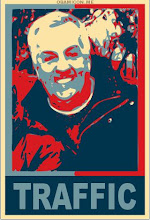
Road less traveled is the more deadly one
By JEFF SHELMAN, Minneapolis Star Tribune
(Originally published on Star Tribune website, July 28, 2008)
Getting behind the wheel of an automobile has significant consequences, a list that includes death. But how often do people really think about that when they turn the key of their car or truck? The Center for Excellence in Rural Safety at the University of Minnesota would like people to ponder just what might happen if they are distracted, tired, had a couple too many beers or decide that that seat belt is a pain.
That's why the U's center dedicated to rural highway safety plotted more than 42,000 traffic fatalities in the United States in 2006 -- the equivalent of 115 each day -- and placed them on an interactive map on the Internet.
Today, its "Safe Road Maps" website will be officially launched at http://www.saferoadmaps.org/ during an annual conference on rural safety. There, visitors can enter their address or ZIP code and see where automotive fatalities occurred that year. They can see whether anyone died in their area or on oft-traveled routes. The listing for each fatality also indicates whether speeding or alcohol was a factor in the crash or the victim was wearing a seat belt. Federal data for 2007 data will be available this fall and added to the site.
"It gives people another opportunity to see the news and personalize it a little more," said Lee Munnich, the director of the center. Munnich added: "Hopefully it will help people improve their driving behavior." Especially in rural areas. Because while the vast majority of people reside in urban areas, a disproportionate number of U.S. fatal traffic accidents happen on rural roads.
"It's not something that the general public knows about," Munnich said. "There's some sense that maybe it's safer to drive in a rural area. The reality is that because people think that, they tend to drive at higher speeds. The statistics show that there is a higher percentage of people drinking alcohol before driving [in rural areas]. They may feel more comfortable doing that in rural areas because there aren't as many people around. "And people are less likely to wear seat belts in rural areas."
CERS researcher Tom Horan summed it up simply. "More congestion occurs on urban roads, but more fatalities occur on rural roads," he said. But Horan said that this isn't a problem that affects only places such as Waseca, Warroad and Willmar. "One out of every two drivers that dies in a rural area is an urban dweller," Horan said. "It was startling to see just how much rural safety significantly effects residents of the Twin Cities."
Research done by CERS also found that in Minnesota, the most dangerous time isn't necessarily in the winter. "The summer months is when there should be extra caution," Horan said. "You have more travel. You have travel to unfamiliar places. You have holiday weekends. "People are driving too fast, they are driving in unfamiliar areas. There are sharp curves, only two lanes. Then there is the use of alcohol and people not using seat belts. Put it all together and people need to be careful."
That's why Munnich and Horan hope people look at where traffic fatalities have taken place and realize that the open road isn't necessarily a safe road.
© 2008 Star Tribune. All rights reserved.



No comments:
Post a Comment